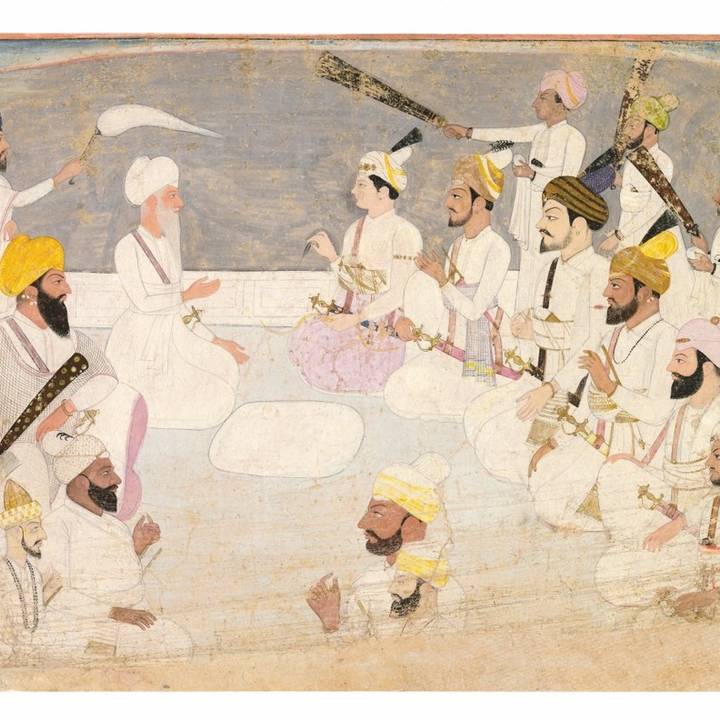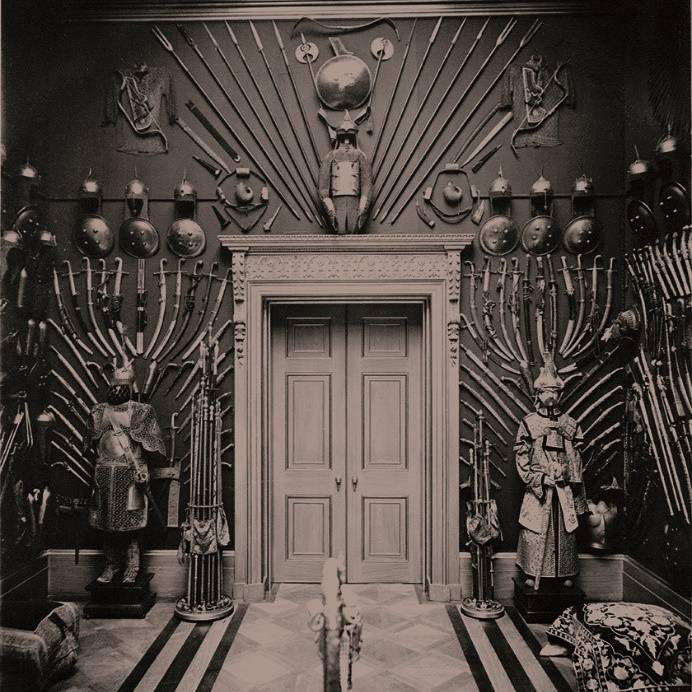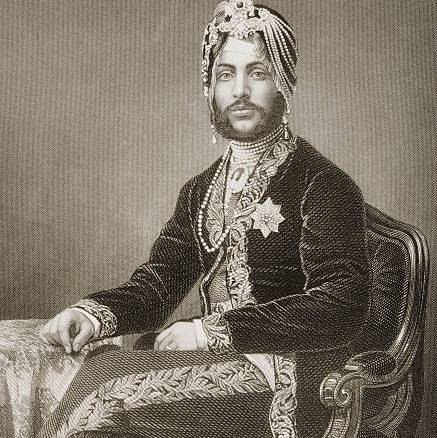‘Sikhism’ is a 19th-century western term for a religious path that Sikhs themselves increasingly refer to as ‘Sikhi’. Sikhs (literally learners or disciples) follow ten human Gurus (teachers). They revere their sacred volume as ‘Guru Granth Sahib’ and address God as Satguru (True Guru) and Wahiguru (Wondrous Guru). Their holiest place of worship is the Golden Temple (known to Sikhs as Harmandir Sahib and Darbar Sahib) in Amritsar, in India’s Punjab state. Sikhs’ second names are Singh (for males) and Kaur (for females) and many use these in lieu of a family name or surname.
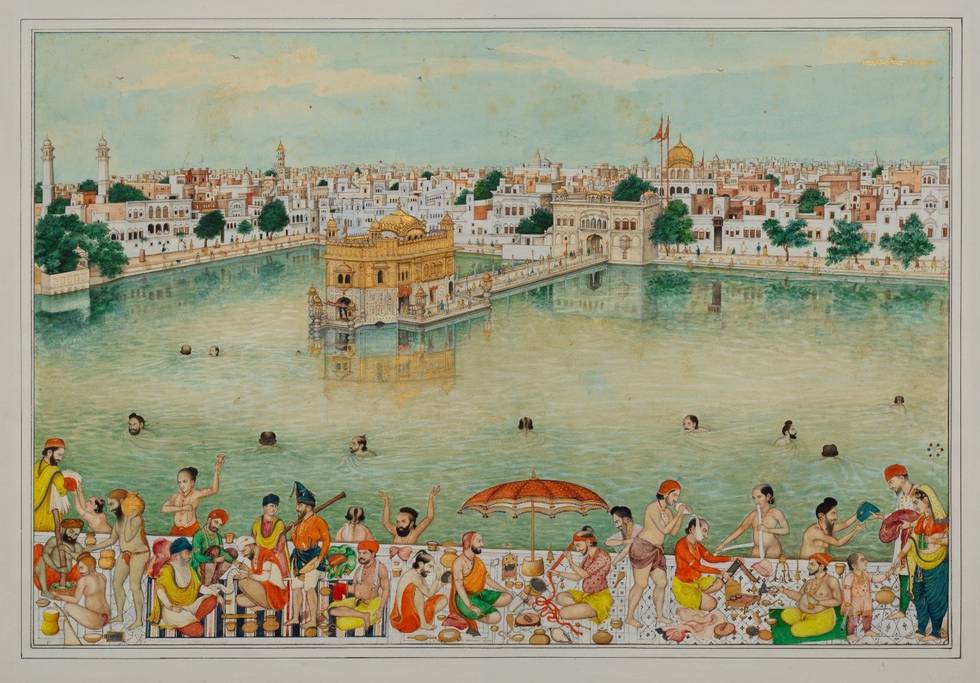
Worldwide, Sikhs number between 26 and 30 million, with about 90 percent living in India, most of them in Punjab. Outside India, Canada has the largest number of Sikhs (about 800,000) followed by the USA and the UK, each with over half a million. In Europe, Italy’s Sikh population is the next largest.
Guru Nanak, the first Guru, lived from 1469 to 1539. He criticised ritual and priestcraft and saw the importance of communicating through the vernacular, rather than a more obscure sacred language. He emphasised oneness, encapsulated in his statement ‘ik oan kar’. Combining the first numeral with a character from the Gurmukhi alphabet, it is translated both as ‘God is one’ and as ‘being’ or ’reality’ is one. As an emblem (ੴ ) it represents the Sikh religion.
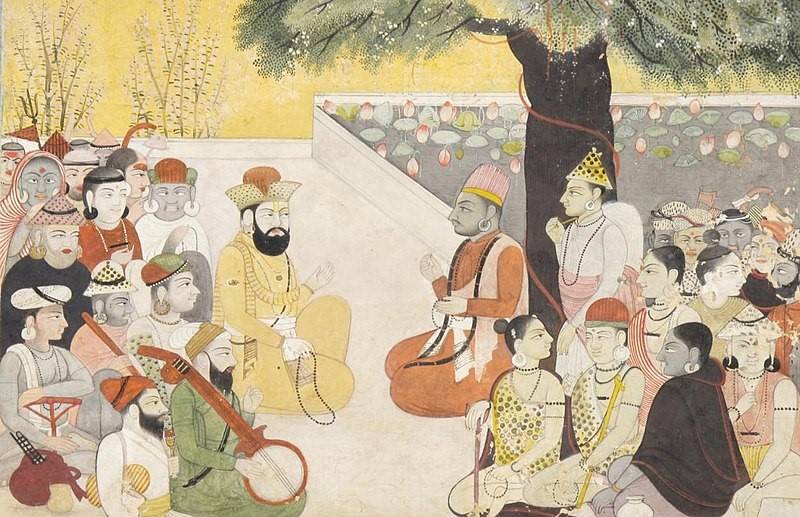
Sikh ethical teaching arises from the words of Guru Nanak and the Gurus who succeeded him. Humans are equal inasmuch as their spiritual progress is independent of their hereditary status. What matters is being oriented towards the Guru rather than being preoccupied with haumai (ego). Five weaknesses ‒ lust, anger, greed, attachment and pride ‒ obstruct union with the divine and mukti (release from being reincarnated).
Sikhs are encouraged to be responsible members of their families and wider society, rather than pursuing an ascetic path. Seva (selfless service to others) is to be accompanied by simran (remembrance of the divine) and a Sikh aspires to being a sant sipahi, a contemplative with a military preparedness for action to protect others and to resist oppression. The Sikh Rahit Maryada is an authoritative code of conduct.
However, Sikhs’ primary guide is the Guru Granth Sahib, the sacred poetic anthology on which, in 1708, Guru Gobind Singh, conferred the status of Guru. Guru Arjan, the fifth Guru, had compiled compositions by earlier Sikh Gurus together with verses by poets including Kabir, Ravidas and (earliest of all) Sheikh Farid and, later, Guru Gobind Singh added works by his father, Guru Tegh Bahadar, the ninth Guru.
The Guru Granth Sahib is central to Sikhs’ life cycle rites. For example, in Sikh marriages the couple walk around the enthroned scripture which is the focal point in any gurdwara (place of worship). Devout Sikhs’ daily prayer routine consists of scriptural passages. The script throughout the Guru Granth Sahib is Gurmukhi and its complex language incorporates words from Arabic and Persian as well as north Indian languages.
The primary division of the scripture is according to raga (musical frameworks). Congregational worship consists of kirtan (devotional music). Generally, ragis (musicians) play tabla (a pair of drums) and harmonium, the instrument originally brought to India by Christian missionaries. Increasingly, traditional stringed instruments such as sarangi and dilruba are being played. Gurmat sangit or Gurbani sangit (musical rendition of the Gurus’ words) reminds Sikhs of Guru Nanak’s journeying with Bhai Mardana, who accompanied Nanak’s singing on the rabab (a lute-like instrument).
Sikhs worldwide access Gurbani from Harmandir Sahib. Restored and gilded in the early 19th century by order of Maharaja Ranjit Singh, the original gurdwara dates back to Guru Arjan. Like all gurdwaras, but on a vaster scale, the Golden Temple provides langar, a vegetarian meal for all who come – which may be many thousands.
Sikhs are bonded by a strong sense of their shared history. It includes the violent deaths (on the orders of Mughal emperors), of two Gurus, Guru Arjan and Guru Tegh Bahadar, who are revered as martyrs. The demise of Guru Gobind Singh, in 1708, was followed by a turbulent period of nearly a century. Thanks to the leadership of Maharaja Ranjit Singh, from 1799 to 1839 Punjab enjoyed peace and stability.
In 1849, the British annexed Punjab. Sikhs became favoured recruits to the British Indian Army, serving in many parts of the world. Some Sikhs were deployed in East Africa to construct the railway and others to serve as police in China. In the First World War, Indian soldiers, including Sikhs, served in the Middle East and North Africa and also in Belgium, France and Italy as well as in Germany. In the Second World War, they fought in the Netherlands, in Myanmar against the Japanese army, and took part in the Allied invasion of Italy and the liberation of Greece.
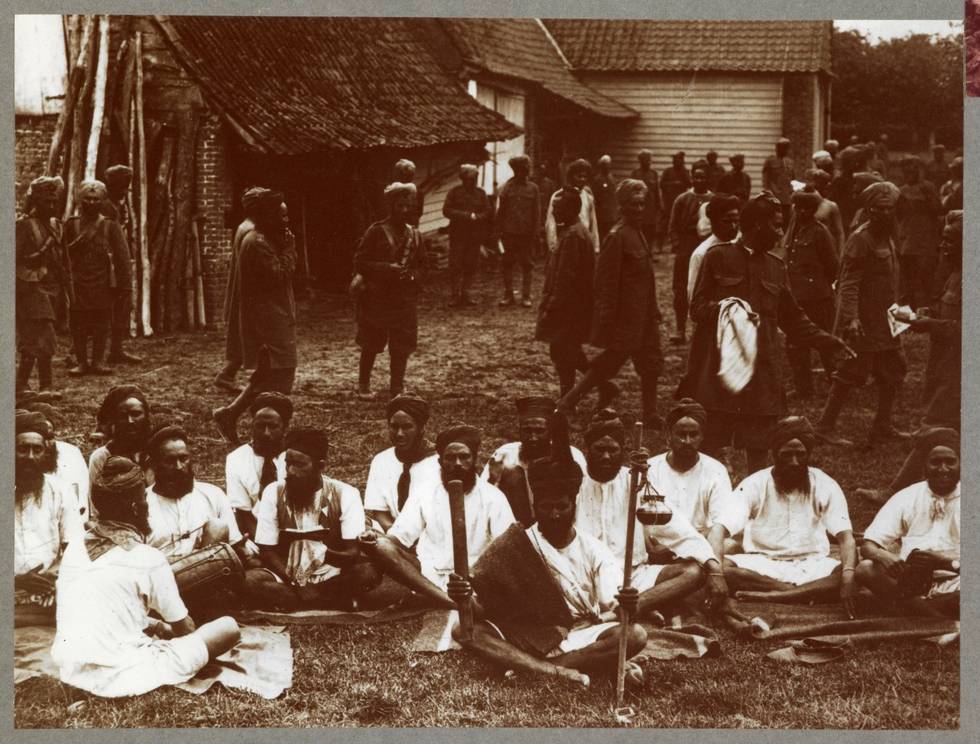
India achieved independence from Britain, in 1947, but this involved the partition of Punjab. Violence erupted, many Sikhs, Hindus and Muslims lost their lives in reprisal killings and almost all Sikhs on the Pakistan side of the new border fled east to the new state of India. When, in 1966, India’s Punjab State boundaries were redrawn, Sikhs were at last in a majority.
Relations with the government of India deteriorated, however, especially in June 1984, when, on the prime minister Indira Gandhi’s orders, the Indian army stormed the Golden Temple. Many more Sikhs were killed in November of that year to avenge Mrs Gandhi’s assassination. Some overseas Sikhs still call for an independent Sikh state.
Worldwide, Sikhs make significant contributions, for example as members of parliament and in the arts, finance, medicine and other professions.
This article was written by Dr. Eleanor Nesbitt, Professor Emerita at the University of Warwick, and author of Sikhism: A Very Short Introduction.
